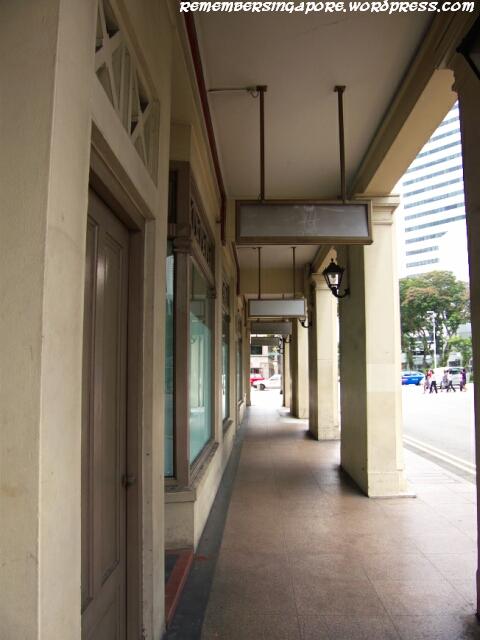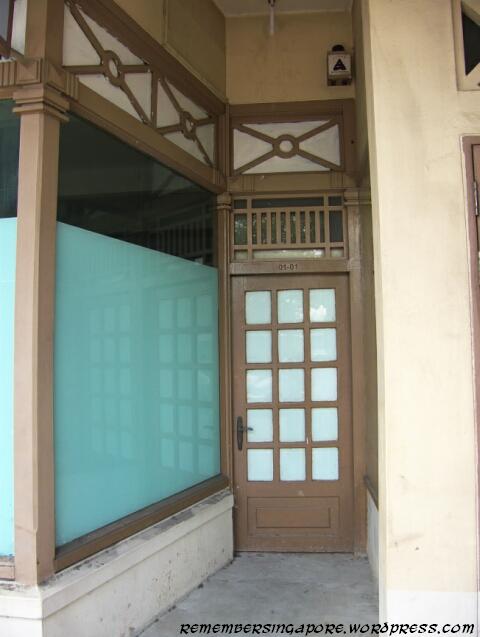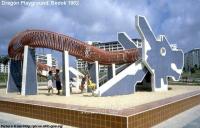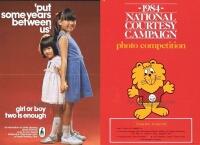Designed in Neo-Classical style, the Capitol Theatre was built in 1929 by British architectural firm Keys and Dowdeswell, who also designed the Fullerton Building and Singapore General Hospital.

During WWII, it was occupied by the Japanese, who renamed it as Kyo-Ei Gekijo and replaced English films with Japanese ones.
For decades, the theatre was the premier picture house in Singapore, screening countless blockbusters and variety shows.


Capitol Building was built in 1933, four years after Capitol Theatre was completed, expanding on the foundation of the theatre. The building, with its huge billboard and curved corner facade, was the iconic structure at the junction of Stamford Road and North Bridge Road.


Capitol was known as Shaw Building before 1989, as Shaw Organisation bought over the building in 1946. Their showbiz lasted a long 40 years, and finally ended in 1987 when Urban Redevelopment Authority (URA) took over the building in 1987. The last movie screened, though, was in 1998.


Both Capitol Theatre and Capitol Building were given conservation status in July 2007.
Singapore Tourism Board (STB) has tried to convert the colonial buildings into an arts and design center in 2000 but without success. It was not until 2010 that a S$250-million bid was accepted to redevelop the area in a 99-year lease.
Expected to be completed in 2014, the developers will revive the glories of Capitol Theatre, Capitol Building and Stamford House, and turn the place into a mixture of hotel, entertainment, retail, dining and residential purposes. The cost is estimated to be around S$750 million.
Published: 20 June 2011








The side doors to the interior are opened while reno is going on.
Ask for permission, and add onto your shots
Thanks for the alert! will attempt to go again 🙂
question:
Did the Capital have a milk bar about 1960, as I remember it being somewhere in Singapore, which was very popular with westerners.
Yes it was one of the many Magnolia bar owned by Cold Storage. Other locations that I can recall was the location opposite Cold Storage at Orchard Rd, at the Arcade
It was great to have a knickerbocker at the Magnolia. A vase size glass full of ice cream and flavourings. A treat for Aussie sailors.
Spent many good times there in my childhood.
nice
Thanks for that about the Capitol milk bar, it sounds about right. if you click on the link below you should be able to see photos of Singapore in the 1960s that I took.
I’m trying to get info on what was behind the National showroom building, next door to Capitol theater. This site was next to the Capitol car park & behind the National showroom. I think it was some club for the ANZAC forces? Have you any memories on this?
The Union Jack Club (opened 1924) – later renamed the Commonwealth Services Club – demolished in 1975.
Sorry I was not involved in the war, so dont have any particular memories of that site. I stayed at the south Seas hotel in Singapore in 1960, which I see now is still standing but as the Rochor 81 hotel on the Rochor Canal and Bencoolen St.
I’ve never heard of the South Seas hote. lThere used to be a hotel named the White House hotel at the junction of Rochor Canal & Benoolen St. It occupied the corner of that stretch. The gov’t appropriated parts of the hotel when they widened Rochore Rd. This might have been part of the hotel you stayed in
The White House Hotel may have been on the opposite corner to the South Seas hotel, but I do not recall it. Do you know if the Merlion ststue is still standing next to the bridge over the Singapore river, it was quite a prominent feature?
Which one are you referring to 🙂 There is “officially” a few Merlions.
They moved the original to a new site after they completed the Marina Bay reclamation. The new location is front of Hotel Fullerton. You may remember that the Fullerton building was the general post office but it is now a hotel
Can read about why the Merlion was moved here:
http://en.wikipedia.org/wiki/Merlion
Before Shaw Building, I remember it was named as Namazie Mansion
The The Capitol was built and developed by the late M.A.Namazie, a Persian pioneer who came and settled in Singapore in 1900s. He was an early Singaporean property developer . Building started in 1929 and he completed the accompanying four-storey building in 1933. It was known as “Namazie Mansions”, back then (not the “Shaw Building”!! ). It sits on the site of the 19th century Dutch Hotel, Van Wyke. Designed by the Shanghai-based Keys and Dowdeswell (same architect who built Fullerton), the building is a landmark in the Civic and Cultural district.
Capitol Theatre, a.k.a. Capitol Cinema and its attendant four-storey building, located at the junction of Stamford Road and North Bridge Road, is of neo-classical architecture.
The Capitol was where the likes of Charlie Chaplin and Douglas Fairbanks, Mary Pickford and other greats of the silent movie era, visited Singapore to promote their movies. The Capitol, then run by the Namazies, used to screen silent movies, as one of Singapore’s first cinemas. Certainly its grandest ! The Theatre had a retractable dome shaped ceiling, and on nights when the weather was cool, the ceiling opened and movies were screened under the stars in the 1000 plus theatre.
The Shaw Organisation acquired the cinema after the war
Namazie – the site of the Namazie Mansions/Capitol Bulding is where the Sailors Home used to be – corner of North Bridge and Stamford roads – opposite St Andrews Cathedral grounds. The Whiteaway Laidlaw building; further up Stamford road with the junction of Hill Street and Victoria Road became Stamford House. Hotel Van Wyke was on the other side of the road.
We had a couple of Namazies studying in the ACS school in Coleman Street and Baker Road, when I studied there in 1964-68.Are you one of them?
Thanx for your comments, I enjoyed my time in Singapore
Ray Morris
My memory is of the huge hand painted posters. It was where I watched the Beatles film A Hard Day’s Night
Namazie Mansions was built at the junction of North Bridge and Stamford Roads. The site had previously been occupied by the Sailor’s Home. The Hotel Van Wyke was opposite the Mansions on Stamford Road set behind the Stamford Canal.
Thanks for the history, my memories are mainly of the 1950s and the Capitol building is one of them, does the building still stand ? also are there any recent photos of Bencoolen St. and Bras basah Rd.
regards
Ray Morris
Ray, the Capitol site is currently being re-developed. There are many photos online of Singapore’s streets and architecture – just search using google images.
Hello.
My husband’s father was in the navy on tour in the band and girlfriend worked at the Dispensary. He was in Singapore and I have some photos and some names and questions… I know this post is from 2012, but I’m taking a chance… 🙂
I remembered the ceiling above the cinema stall was painted with the 12 circularly positioned horoscope figures.
Both sides of the screen had a sculpture of a roman riding a horse chariot.
Very unique and the only one with such internal features among all the local cinema.
As an RAF clerk at HQ FEAF, RAF Changi, we used to take a black and yellos mercedes pick-up taxi and alight at The Capital where we would have a bowl of noodles before walking into the city, generally first stop was Change Alley.
Hi all,
I am currently researching on Capitol Theatre. Does anybody still remember the color of the iconic capitol theatre signage neon color during the older days? I am trying to explore how colors and lighting can bring back certain memories of old places.
Appreciate any input. Thank you
Hi Brandon – I too have been researching the Capitol Theatre and building. The earliest colour photograph I have shows the Capitol building at dusk c1955 and the Capitol Theatre sign at the corner of Stamford and North Bridge Road is neon-illuminated in red. The lines of the building are picked out in green neon and the movie details on the large hoarding above the roof line are yellow. Subsequent colour photos confirm red was the colour of the Capitol Theatre sign thereafter. As for the Theatre itself the name was at one point turqoise and much later c 2010 a version of lilac. Hope this helps!
A drawing of Capitol building and cinema, along Stamford Road, Singapore circa 1948
(Photo credit: Facebook Group “Nostalgic Singapore/Riduano Duano”)
This is actually not a drawing but a colorized photo.
Capitol Theatre to reopen in April 2015
April 3, 2014
CHANNEL NEWSASIA
SINGAPORE — The historic Capitol Theatre will reopen in April next year with the staging of a musical that depicts the lives and struggles of Singaporeans, including former prime minister, Mr Lee Kuan Yew, as they built a new nation.
Called Singapura – The Musical, the show will be produced by The 4th Wall Theatre Company. The musical will travel to London’s West End and Broadway in New York following its Singapore debut. A private and invitation-only “listening preview”, featuring a number of songs from the musical, will be held later this month.
The plans for Capitol Singapore — which comprises the former Capitol Theatre, Capitol Building, Capitol Centre and Stamford House — was announced at a topping out ceremony held today (April 3). Following the S$750 million makeover, the development will comprise a luxury 157-room hotel, an upmarket retail mall, 39 high-end residences as well as Capitol Theatre, which will have close to 1,000 seats.
I have been reading these posts all afternoon and was wondering if I was wrong or if there was a Bata shoe shop nearby. I was right!
https://www.google.tt/url?sa=i&rct=j&q=&esrc=s&source=images&cd=&cad=rja&uact=8&ved=0CAcQjRw&url=http%3A%2F%2Fkfchia.wordpress.com%2F2009%2F08%2F29%2Fmy-old-singapore%2F&ei=jElEVK6IMoWVgwTKuYDAAw&bvm=bv.77648437,d.cWc&psig=AFQjCNFwAEFxSvlaAXWAuntKh1NMGzejgw&ust=1413847692508390
The resurrection of Capitol Theatre
May 16, 2015
It will be curtains up at the grand, much-loved Capitol Theatre in three days, when it re-opens with Singapura: The Musical, a US$2 million production centred on life in Singapore between 1955 and 1965.
When The Business Times visited the theatre this week, workers were adding finishing touches to its refurbished interiors. In the dimmed hall, the 12 signs of the zodiac in mozaic on the domed ceiling and the winged Pegasus on either side of the stage glowed. The seats, now plusher, number 977, down from about 1,700. There is more leg room.
Technology has arrived in this theatre built about 90 years ago. Its hall has now been kitted out with Southeast Asia’s first advanced rotational floor technology, so the seats can be hidden below the floor, creating an empty space for other uses in minutes.
This transformation nearly didn’t come to be – not at least until the issue of how a theatre could be commercially viable was resolved.
Capitol Theatre screened its last movie, Soldier, at 9:15pm on Dec 29, 1998. It was a forgettable sci-fi flick starring Kurt Russell, which 500 people watched. After it ended, the crowd had ripped up film posters and toilet signs off the walls of the cinema and badgered the theatre staff to stamp their tickets with the Capital stamp, just for old times’ sake.
The colonial-style building was to sit disused between 1999 and October 2010, even as the government tried to revive it as a performing arts centre. At one point, the project was passed between the Singapore Land Authority and the Singapore Tourism Board (STB) which, after evaluations and a search for investors, found it to be a commercially impractical exercise.
In response to media queries in 2008, the Urban Redevelopment Authority (URA) had said that STB had assumed that Capitol Theatre would be revamped and run as a standalone arts performance venue, with no firm plans to redevelop the rest of the site. URA said: “While the proposal was implementable from a functional and operational point of view, it was found to be economically not feasible.”
It is easy to see why, consultants say. Film screenings and performing arts do not make for easy profits, and theatres usually cannot make it on their own – unless they are run as a “loss leader” in the context of a larger development with other commercial components.
It was with this in mind that the theatre site was released for tender under the reserve list in 2008, with three other buildings – Capitol Building, Stamford House and the dingy three-storey Capitol Centre. In 2010, the commercial site was triggered for sale, and the parcel eventually went to a consortium led by Pua Seck Guan’s Perennial Real Estate and the Kwee family-backed Pontiac Land for S$250 million.
The consortium had its work cut out for it. The brief included the restoration of the by-now-rat-infested place to its former glory, adhering to a slew of conservation rules.
Another challenge lay in undertaking the works – including hacking down the old fly tower, the entire first floor and excavating a basement – while maintaining the structural integrity of the building and other nearby structures.
The URA also required at least a quarter of the land parcel’s gross floor area to be used for hotel rooms. Besides the theatre, retail, food & beverage and entertainment uses were also encouraged, and residential use was allowed.
This brings us to the present-day Capitol integrated development, comprising the revamped theatre, Capitol Building and Stamford House, which will now house The Patina, a 157-key hotel; the luxury Eden Residences will sit atop the retail mall Capitol Piazza (Neue), in place of the torn-down Capitol Centre.
Ong Choon Fah, chief executive at DTZ Southeast Asia, said: “Theatres can’t quite make money by themselves. To have a viable, sustainable business model, you have to cluster them, string them with some retail, hotel and residences so the numbers will stack up commercially to make it viable. A residential component also enables the developers to sell off land, so it helps their cash flow and reduces their risks.”
She added, too, that few investors would want to invest in a theatre building alone, given Singapore’s small and not-so-mature arts market. “It’s not your West End London. You can’t have the same show running every night. It’ll run for maybe a few weeks, and then off it goes.”
A spokesman for Capitol Investment, the joint-venture developer, said that the sums invested in the rotational floor technology opens up fresh avenues for revenue yields. With the configuration of seating so versatile, the theatre will now also be suitable for conventions, seminars, functions and MICE events.
“We want to ensure the theatre is yielding not only at night, but at all times, which is why we invested in this system.”
The theatre’s ground-level access also makes it perfect for red carpet events. Golden Village has agreed to be the theatre’s partner for blockbuster premieres, and has installed its servers and added its projectors to the theatre.
Mirza Namazie, the grandson of M. A. Namazie, the Persian pioneer who built Capitol in the late 1920s, when asked what he thought of the changes, said he was pleased the theatre has been preserved and has retained its function. Noting, however, that the theatre has evolved from a common everyday cinema to a high-end arts venue, he said: “If you make it more upmarket, of course fewer people will be able to enjoy it, but it’s still a landmark.”
Mr Namazie, who is managing partner of law firm Mallal & Namazie, added: “As the developers have paid a lot for the site, they would have to plug it in a way that justifies what they paid, otherwise the development won’t be viable.”
In his 60s, he is old enough to recall Capitol as it used to be. It was his favourite, he said, because of its steeply raked seats, which gave all patrons a good view of the screen.
He also recalled that, as a child, the audience used to have to stand up for God Save The Queen before a movie started.
“That said, in those days, it was also a bit of a luxury to go to the cinema. How many could afford to pay S$1 or S$2 for a ticket back then?”
http://www.businesstimes.com.sg/real-estate/the-resurrection-of-capitol-theatre
The revamped Capitol Theatre, 2015
(Photo credit: Zaobao)
Ther was a café – called the Malayan café
There was also a Chinese restaurant called The Shanghai Room.
The Malaya Cafe served very nice wantan and char siew noodles.
Next to the Magnolia milk Bar was a music instruments shop called Swee Lee
Many thanks for your comments, I am now 85 but can still remember the milk bar as a young westerner dairy milk shakes were popular back in New Zealand I never had time to go to the movies as I was only in Singapore for about a month doing charity work
Many of my colour photos of that period are now stored in Flickr
The Chinese restaurant was originally Capitol Chinese Restaurant, that became the Imperial Room, an offspring of Shanghai Room located in Clemenceau Ave near Rediffusion. Imperial Room ceased operation in the mid-late 1970’s.
I still have many photos of Singapore and Malaysia during 1960s I can email these to you
Ray
I remember riding CSS bus no. 1 with my late Dad from my maternal grandparents’ home at Marine Terrace and stopped at the Capitol Theatre, before switching to SBS bus no. 161 to Sembawang Road to visit my late paternal grandparents. This was in the early 1980s.